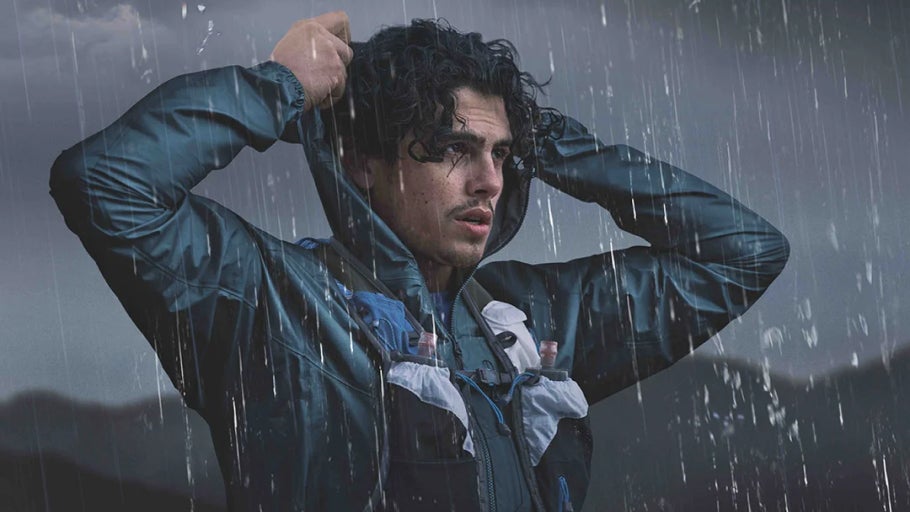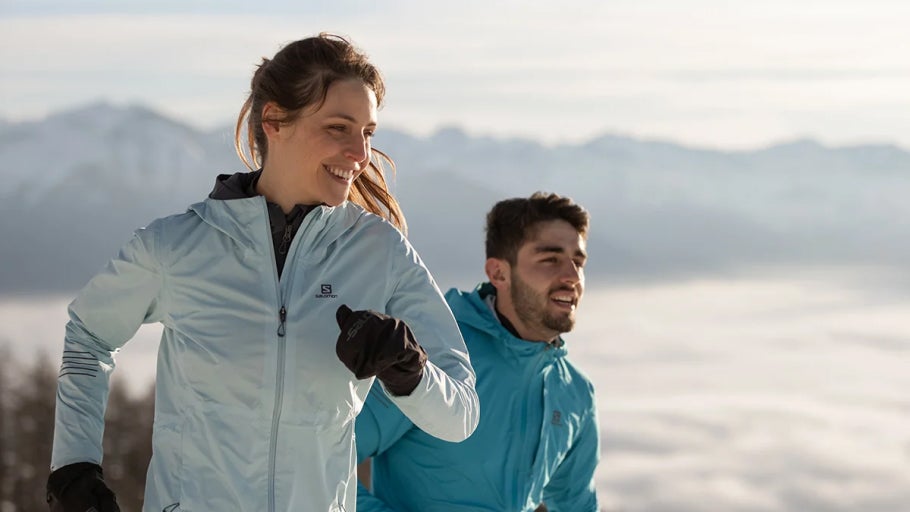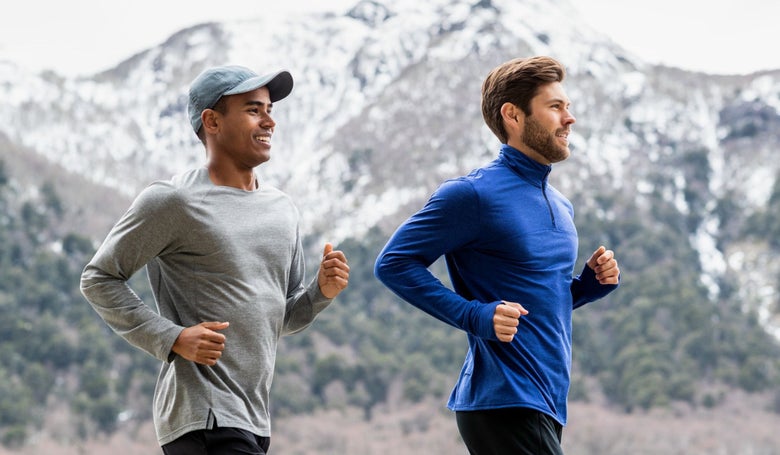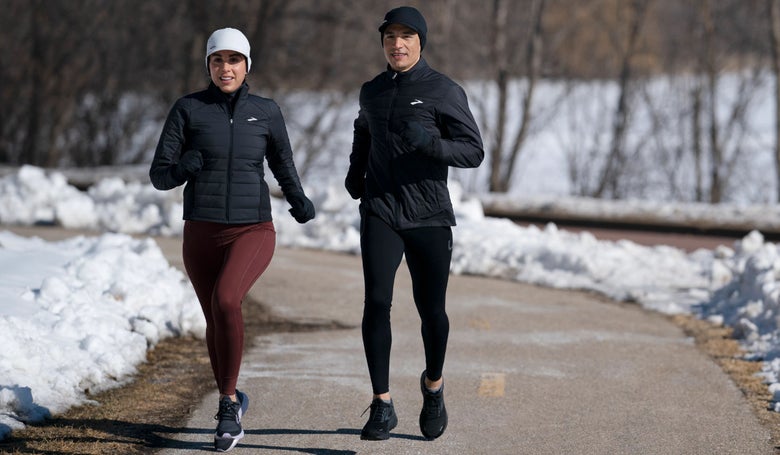
How to Layer for Running in the Cold: Top 4 Tips
As Alfred Wainwright once wrote, "There's no such thing as bad weather, only unsuitable clothing." Running in the wintertime can still be enjoyable with the right gear.
But how many layers of clothing are suitable to wear while running in cold weather? Striking the perfect balance of not overdressing (which results in overheating) and not underdressing (leaving you freezing) can be tricky.
Whether your body naturally runs cold or warm, you may need to experiment with what works best for you and find your happy medium. To get you started, here are our tips for how to layer for cold weather running.
Tip #1: The Basics of Layering
Let's start with the basics of layering. In general, there are three layers: base, middle, and outer.
The Base Layer
Since the base layer is closest to your skin, it should be soft, light, and made from synthetic, moisture-wicking fabric. The base layer's primary function is to prevent excessive sweat saturation, which can lead to discomfort and hypothermia. During freezing temperatures, some runners may wear two base layers (such as a compression top under a long-sleeve shirt or half-zip).
Avoid Cotton Like It's the Plague
Cotton will absorb your sweat and keep it on your skin, rather than pulling it away from you. This will make your base layer feel heavy and can lead to chafing and discomfort.
The Middle Layer
Next, you need an insulation layer of clothing over your base layer to keep you warm. When the temps are not cold enough for a jacket but not warm enough for just running solo with a long sleeve shirt, a running vest strikes the perfect balance. The goal of your mid-layer is to trap heat and keep you warm. Down, synthetic down, fleece, or merino wool are all great options.
The Outer Layer
The outer layer is there to protect you from the elements. Think waterproof or water-resistant. It is meant to keep snow, rain, sleet, or wind from penetrating your mid-layer. In extreme temperatures, it should also prevent the cold from penetrating your middle insulation layer.
Tip #2: Your Legs Deserve Layers Too
In freezing temperatures, your legs deserve layers too. Following a similar philosophy, you'll want to start with a moisture-wicking base layer. Fleece-lined or thermal tights are a great option if they are made out of a material like merino wool or polyester.
If you tend to run warmer or the temperature is not extreme, you might be perfectly fine with a base layer. For extra warmth, you can add an outer layer. If the thermometer reading is below zero, this outer layer may be a wind-resistant pant or jogger. For a more minimal option, linerless running shorts do the trick.
Tip #3: Dress Warmer Than the Actual Temperature
You might be thinking that you would rather wear too much, and be too hot, rather than being too cold. Believe us, this is not the case when running. If you layer too much, this could lead to excessive sweat, which could lead to excess sweat building up and leaving you colder than you want to be.
Therefore, the rule is to dress 10 to 20 degrees lighter than you would for the actual outdoor temperature. While the first few minutes might feel cold, your body will do its job of warming you up once you get moving.
Tip #4: Don't Forget Your Extremities
Layering your coreand your legs are just the first two pieces of the puzzle. The final piece is making sure your extremities are protected. You'll want to consider your head, hands, and feet.
Head and Ears
We've all been on a run where your ears get too cold and you're miserable for the rest of the run. Ears lack a protective fat layer, which means they need some extra help to stay warm. Headbands, beanies, neck gaiters, or balaclavas are essential when heading out on a winter run to ensure that your head and ears stay protected.
Hands and Fingers
As any cold weather veteran knows, your fingers are some of the first body parts that will start feeling the elements. Not every cold-weather run will have the need for them, but gloves and mittens can be an essential layering item when the weather dips below freezing.
Feet and Toes
Wintertime means it's time to pull out (or purchase) wool socks. Wool works wonders in keeping your feet warm. Also, it will protect you against the elements since it absorbs less water.
Don't Let Cold Weather Give You Cold Feet
As the weather shifts and the temperature drops, don't let wintertime give you cold feet, literally or figuratively. By strategically layering for the cold, you can get out there and keep chasing those miles. Cold weather waits for no runner—why should you?
Related Articles













